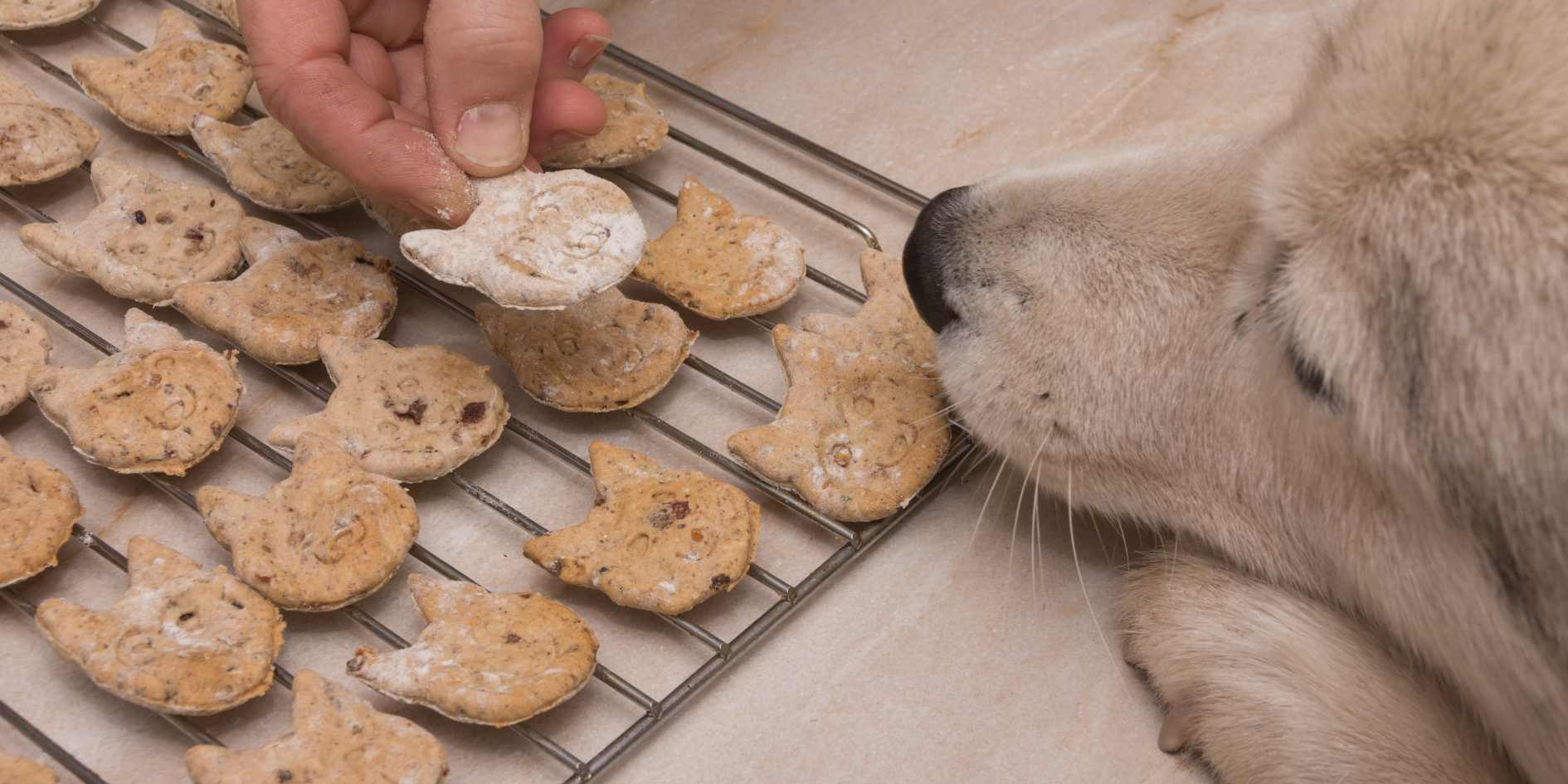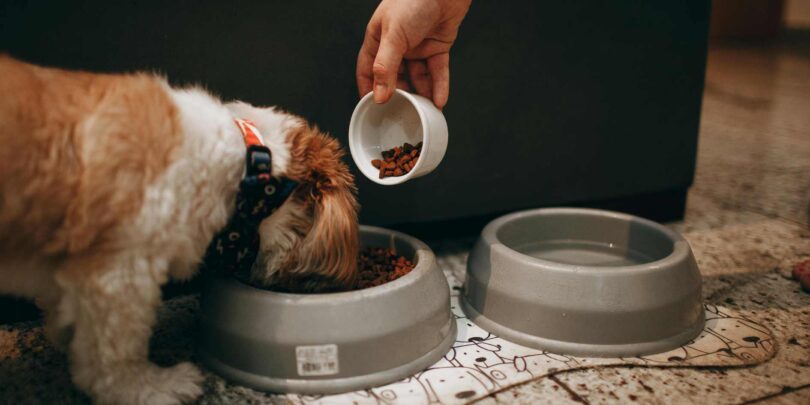Diabetes in dogs may be difficult to diagnose but it can be controlled with the correct attitude particularly in relation to diet. The dog food is very essential in keeping your dog blood sugar, energy, and health levels balanced. Diabetic dog food is even more essential where pet obesity and chronic diseases are increasing.
This manual will tell you all that you need to know why dog food should be diabetic friendly, what to feed your dog, the frequency of this feeding, and even whether to use store-bought or homemade food. Let’s dig in.
What Is Diabetes in Dogs?
Understanding the Condition
The type of diabetes mellitus in dogs typically corresponds to Type 1 diabetes in humans i.e. the insulin production is minimal or absent in the pancreas. The insulin is essential since it assists the cells in absorbing glucose (sugar) in the blood to generate energy.
In the absence of insulin, glucose becomes accumulated in the bloodstream-resulting in high blood sugar, excessive urine, losing weight, feeling of fatigue and even vision problems (cataracts).
Why Dog Food Matters for Diabetic Dogs
The insulin dose of your dog will greatly depend on the food consumed by the dog. Irregular meals or low-quality food may result in serious spikes or decreases in blood sugar.
Conversely a well-balanced, consistent diet can:
- Stabilize glucose levels.
- Maintain muscle and healthy Weight
- Improve energy and mood.
- Minimise complications in the long-term.
It is equally important to feed a dog the correct food, as insulin.
Best Nutrients for Diabetic Dogs
Low-Glycemic Carbohydrates
Carb-heavy diets are unnecessary to diabetic dogs. Actually, high carb foods that digest quickly (such as white rice or corn) can lead to spikes of blood sugar levels.
Instead, choose low-glycemic, complex carbohydrates that release glucose slowly:
- Sweet potatoes (occasionally)
- Brown rice
- Barley
- Peas
- Lentils.
Avoid: white rice, corn, wheat and any food containing corn syrup or added sugars.
Moderate Fiber
Fiber decreases the speed of digestion and the rise in blood sugar levels. Fiber (with soluble such as oats or some vegetables) works especially well. Nevertheless, an excessive amount of fiber may also lead to gas or loss of appetite, so a moderate level is essential.
Recommended fiber sources:
- Pumpkin (unsweetened)
- Carrots
- Green beans
- Oat bran.
High-Quality Protein
Diabetic dogs require lean and digestible protein to help keep the muscles massed and provide energy without blood sugar fluctuations.
Best protein options:
- Chicken
- Turkey
- Fish (salmon or whitefish)
Fatty cuts or by-products of low-quality meat are to be avoided.
Healthy Fats (in Moderation)
Fats are beneficial sources of energy but they must be managed in diabetic diets particularly when your dog is overweight or where it has high triglycerides.
Choosing the Right Fats:
- Omega-3s from fish oil
- Flaxseed oil
Avoid:
- Saturated animal fats
- Greasy table scraps
Complete Vitamins & Minerals
Balanced diabetic dog food is supposed to be of AAFCO standards to make sure that your pup receives all the necessary nutrients.
Look for added:
- Zinc
- B vitamins
- Magnesium
- Antioxidants (like vitamin E).
Feeding Schedule and Consistency
Stick to a Routine
Fed both in the morning and evening, the feeding of diabetic dogs synchronizes the food intake with the insulin response.
Most vets recommend:
- Two meals a day, 12 hours apart
- Feed before giving insulin
- Avoid random treats between meals.
Monitor Portions
A measuring cup or kitchen scale can be used to make things consistent. Adjust portions based on:
- Weight
- Activity level
- Blood sugar readings
No Snacking
Snacks can disrupt insulin effectiveness.
If you want to give treats, ask your vet about safe, low-carb options like:
- Freeze-dried liver
- Small bits of boiled chicken
- Diabetic prescription medication.
Commercial Diabetic Dog Food: Pros and Cons
Pros
- Complete and balanced nutritionally.
- Was created with blood sugar control in mind.
- Convenient and shelf-stable.
- Supported by research of veterinarians.
Cons
- High priced when compared to normal dog food.
- Some dogs dislike the taste.
- May have fillers or poor-quality ingredients.
Popular options
- Hill Prescription Diet w/d or m/d
- Royal Canin Glycobalance
- Purina Pro Plan Veterinary Diets DM.
It is better to be gradual (in 7-10 days) and also to seek advice with your vet before switching brands.
Homemade Dog Food for Diabetic Dogs

Home cooked diets are possible but you need a veterinary nutritionist. A home cooked meal that is not properly balanced may cause nutrient deficiencies or erratic glucose levels.
Benefits
- Complete ingredient control.
- More appetizing to fussy eaters.
- Customized to other medical problems (e.g., kidney disease).
Drawbacks
- Difficult to balance vitamins and minerals.
- Pots and prepares and pours out.
- Needs accurate insulin correction.
Sample Recipe (vet monitored)
- Boiled chicken, with the skin removed.
- Baked carrots and broccoli.
- Brown rice or quinoa
- Fish oil supplement
- Calcium (e.g. crushed eggshell or supplement) source.
Important: Homemade diets should always be reviewed with a vet nutritionist in order to be accurate.
How to Choose the Right Dog Food
The following is a checklist which can be used to evaluate options:
| Criteria | What to Look For |
| Protein | Lean, whole meats (e.g., chicken, turkey, fish) |
| Carbs | Brown rice, oats, peas, sweet potatoes |
| Fiber | Moderate, from vegetables and grains |
| Fat | Low to moderate, with omega-3s |
| Sugar | No corn syrup, molasses, or added sugar |
| Label | AAFCO-compliant, preferably vet-recommended |
| Reviews | Check if other diabetic dog owners recommend it |
Tips from Dog Owners (Based on Real Experiences)
Based on the discussions on forums, as well as blogs, numerous owners are going through the same issues:
Common Tips
- Wet kibble by adding warm water or low-sodium broth in order to enhance smell and texture.
- Add one spoonful of canned diabetic food to stimulate eating.
- Eat in a peaceful stress-free place.
- Use same measuring tools of portions.
Do not feed them on table scraps however cute they may be!
Monitoring Your Diabetic Dog’s Progress
After putting your dog on a diabetic friendly diet, you need to check his progress.
Watch for Signs of Improvement:
- More stable energy
- Regular appetite
- Fewer accidents indoors
- Normal weight
Warning Signs to Contact Your Vet:
- Sudden weight loss or gain
- Lethargy or confusion
- Loss of appetite
- Vomiting or diarrhea
- The glucose values are irregular.
Diet and insulin can be fine-tuned with the help of routine vet visits and glucose curve test.
FAQ
Is it Possible to Give my Diabetic Dog Anything as a Treat?
Yes, but low-carb treats, only those that your vet has approved. Biscuits should not be purchased in any stores without being marked as diabetic friendly to dogs.
Would I Feed my Diabetic Dog Free?
No. With free-feeding, it is impossible to regulate insulin. Stick to timed meals.
Can Diabetic Dogs Eat Raw Food?
Raw diets are also very debatable and not typically advised to diabetic dogs unless extremely monitored by a veterinarian.










Leave a Comment